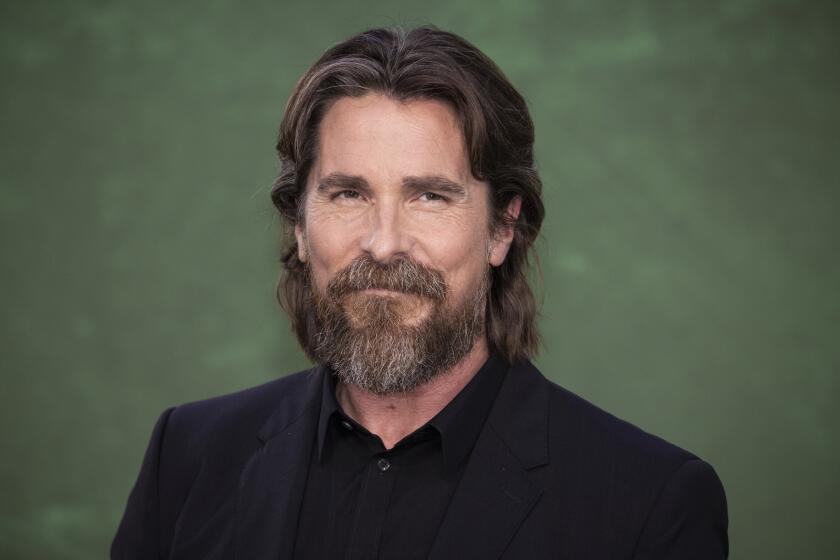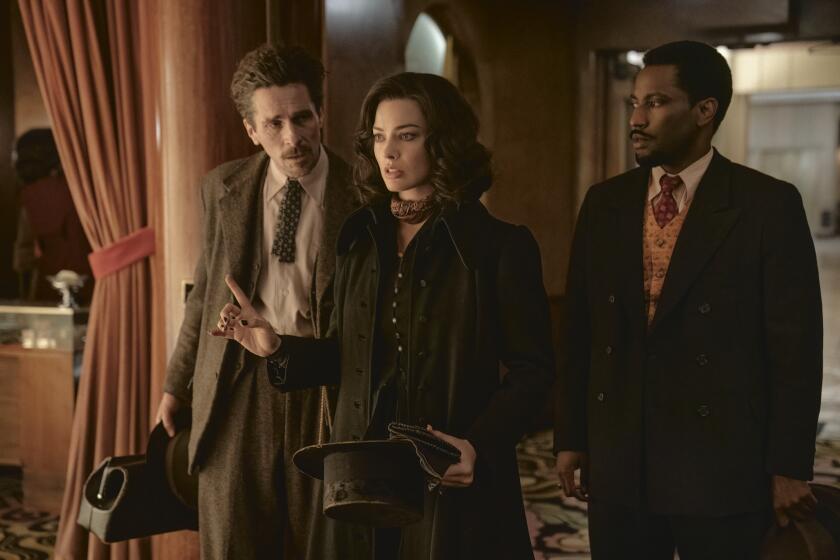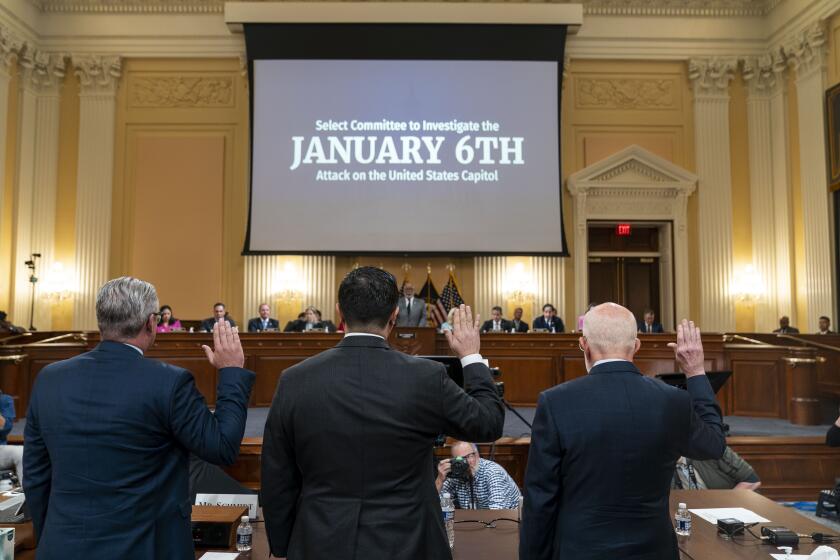How a star-studded new movie whitewashes American fascism
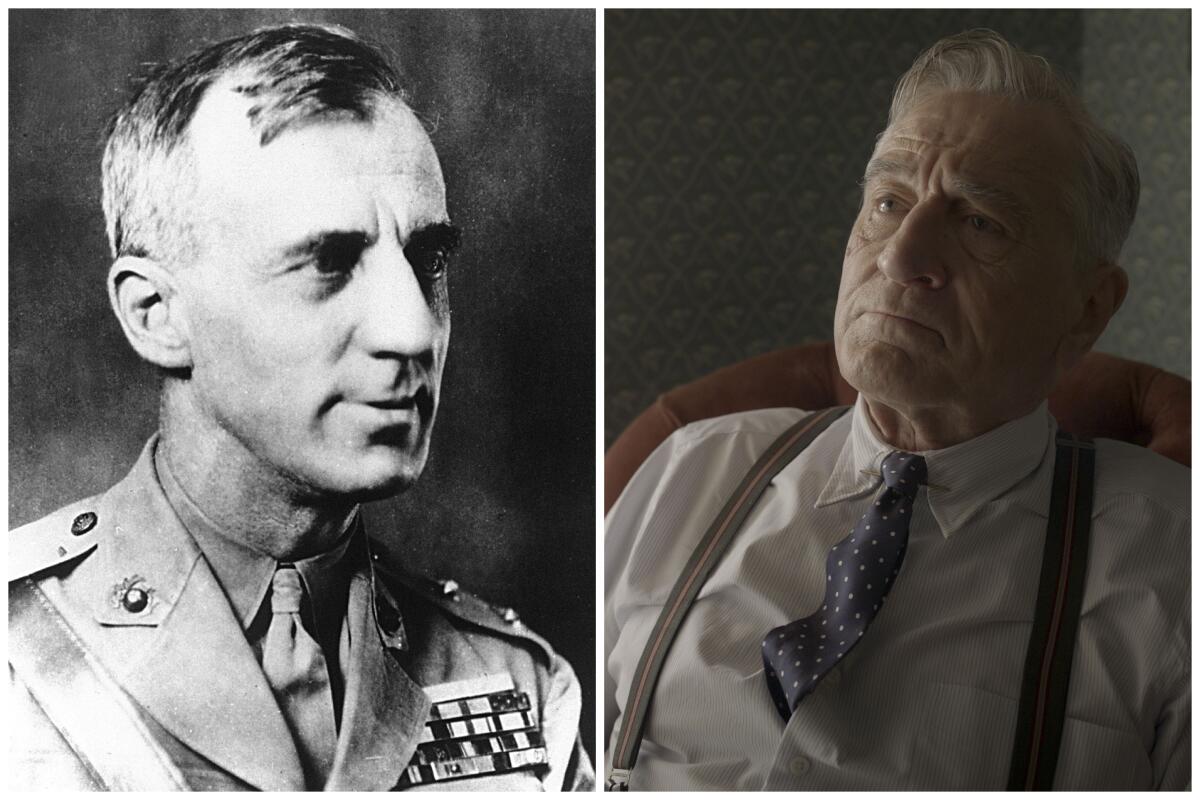
- Share via
David O. Russell’s “Amsterdam,” initially billed as the story of three friends who found themselves “at the center of one of the most shocking secret plots in American history” presents itself as being based on a true story. But the film, in theaters now, adheres little to reality. It veers so far from the historic record, in fact, that Jonathan M. Katz, the journalist whose book “Gangsters of Capitalism: Smedley Butler, the Marines, and the Making and Breaking of America’s Empire” tells the story behind “Amsterdam,” estimates the film is only “10%” accurate.
Written and directed by Russell, “Amsterdam,” set in 1933, follows two World War I veterans, Burt Berendsen (Christian Bale), a doctor, and Harold Woodsman (John David Washington), a lawyer. The pair are approached by Elizabeth Meekins (Taylor Swift), the daughter of their former regiment commander, to complete an autopsy of his body after his suspicious death. Soon, they are suspects in Elizabeth’s murder after she’s pushed in front of a car, and go on the run to discover who was after her father. They reconnect with their old friend Valerie Voze (Margot Robbie) and somehow become entangled in a plot against the U.S. government. The period drama is largely fiction, although some elements were inspired by history.
Here’s what’s true and what’s fiction in “Amsterdam.”
Christian Bale confirmed to GQ that he stepped in on Amy Adams’ behalf when she clashed with director David O. Russell on the set of ‘American Hustle.’
The Business Plot
The primary historical event on which “Amsterdam” centers on is the so-called Business Plot, an alleged political conspiracy from 1933. News of the plot arose when retired Marine Corps Maj. Gen. Smedley Butler claimed that a group of wealthy businessmen had approached him with a plan to overthrow President Franklin D. Roosevelt. The following year, Butler testified in front of the the House Committee on Un-American Activities, claiming the group was planning the coup. The committee’s final report asserted, “There is no question that these attempts were discussed, were planned, and might have been placed in execution when and if the financial backers deemed it expedient.”
In “Amsterdam,” that plot emerges midway through the film, although not all of it is portrayed with accuracy. Robert De Niro’s character, Gil Dillenbeck, is based on Butler and his role in the Business Plot. In fact, the two newsreels featuring Dillenbeck in the film are re-created from actual newsreels. A representative from the group who wanted to overthrow FDR did show up at Butler’s house with money to attempt to convince him to participate, as is shown in the film.
“There was a Business Plot, or Butler did allege a Business Plot,” Katz confirms. “And there is good reason to think that something was in the works. We don’t know how many people were involved. We don’t know if all the people who Butler ended up implicating were involved. Weirdly, the most accurate part of the movie was that there was a guy named Gerald C. MacGuire. They changed everybody’s name, except MacGuire’s, although they spelled it ‘Maguire.’ Gerald C. MacGuire did go to Butler’s house .... He wanted Butler to go to the American Legion convention and give a speech, that they would write, denouncing FDR for taking the dollar off the gold standard. All that matters really is that Butler said, ‘Get lost.’”
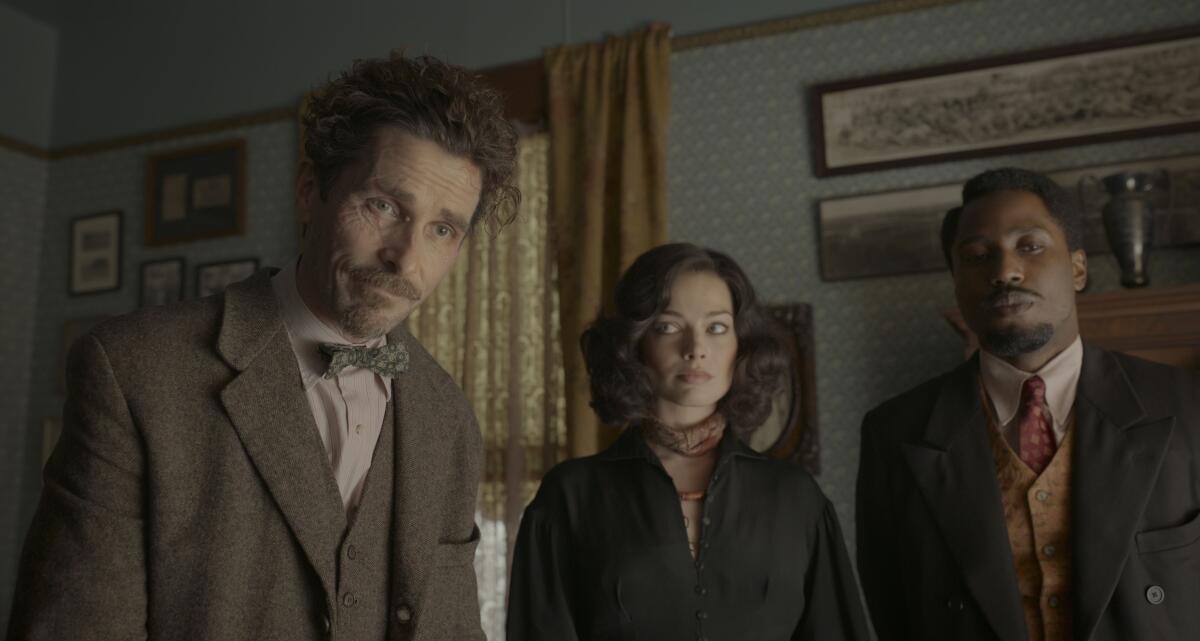
Russell’s script builds to an event held for the Army’s 369th Infantry Regiment, a real-life all-Black unit in World War I nicknamed the “Harlem Hellfighters,” where Dillenbeck is invited to speak. He feigns an alliance with Maguire and the event is overrun by Nazis, who attempt to assassinate Dillenbeck when he goes off-script. While the Business Plot is real, none of that happened.
“It’s just completely fake,” Katz says. “And it’s fake in a very telling way. First of all, clearly what Russell’s production designers saw was a documentary short that came out in 2017 called ‘A Night at the Garden,’ which was found footage of Madison Square Garden in 1939. But that happened five or six years after Butler revealed the Business Plot. That’s where the production designers got the George Washington backdrop from. That’s where they got the people in Hitler youth-style uniforms. So that’s mashing it all together.”
The film eventually reveals that the plot was cooked up by a group of businessmen known as the Committee of the Five, which never existed. “There was no secret organization like that skulking around, assassinating people,” Katz notes, adding, “What the movie does is it creates this fake shadow cabal. I mean, it’s possible that somebody got murdered by somebody, but it’s not part of any kind of historical record.”
Review: David O. Russell goes to war in ‘Amsterdam,’ but this historical farce Nether comes together
Christian Bale, Margot Robbie and John David Washington headline David O. Russell’s star-studded madcap history lesson set during and after World War I.
Smedley Butler’s legacy
In the film, not much background is given for Dillenbeck, a retired Marine officer — and the real-life Butler diverges from the character even on these points. He never crossed paths with the Harlem Hellfighters in Belgium, nor did he give a speech at an event they held after the war. Although Butler’s ribbons and medals are re-created in the film exactly, he was not quite the hero Dillenbeck is made out to be, either.
“He would have won those two Medals of Honor that are at the top of his ribbon shelf crushing a resistance to U.S. occupation and invasion of Haiti,” Katz explains. “And killing women and children. He was a huge part of an invasion force that killed mostly women and children in Mexico in 1914. Almost all of those ribbons were [from] places that Butler went and crushed democracy.”

The film fails to acknowledge Butler’s history, which is why MacGuire thought he would be approachable about the coup in the first place.
“The reason why the Business Plot was even thinkable was because all of these powerful people who were, allegedly or more provably, involved in this thing — including Smedley Butler, who ends up turning on them and blowing the whistle — had done things like this all over the world,” Katz notes. “The American empire was coming back home, and that’s really the story today.”
Times television critic Lorraine Ali is covering the Jan. 6 committee hearings. Catch up on the big moments you missed with her recaps.
Nazis vs. Americans
Russell’s film suggests that it was through Nazi influence that characters like Libby and Tom Voze (Anya Taylor-Joy and Rami Malek) became involved with the Business Plot. The characters are written as having been compelled by German Nazism, which Katz feels undermines the reality that America had — and still has — its own history of fascism. In his book, he connects the Business Plot to the Jan. 6 insurrection, both examples of war veterans being tapped to overthrow the U.S. government, and he feels Russell missed a key element of history in “Amsterdam.”
“The thing that annoyed me the most was the way the movie portrays this [as] some kind of cadet operation of the German Nazis, and that this is all about rich Americans just having a jones for actual Nazism to the point that their topiary [is] a swastika on their front lawn,” Katz says. “Russell stages this completely fake event, with Butler/Dillenbeck giving the speech .… There you’ve got Hitler Youth guys and Nazi uniforms, and what that does is, it visually and narratively reinforces the idea that fascism is this foreign European thing. That that was the only way fascism would have ever reared its head in the United States.”
In reality, the events were about American fascism.
“The Business Plot is not an example of German swastika-waving, Hitler Youth uniform-wearing fascism almost coming to power,” Katz confirms. “The Business Plot is an example of American capitalists, very, very rich Americans, playing with a kind of authoritarianism that was ascendant in Europe, but also drew on traditions and histories and tendencies that existed in the United States.”
More to Read
Only good movies
Get the Indie Focus newsletter, Mark Olsen's weekly guide to the world of cinema.
You may occasionally receive promotional content from the Los Angeles Times.
